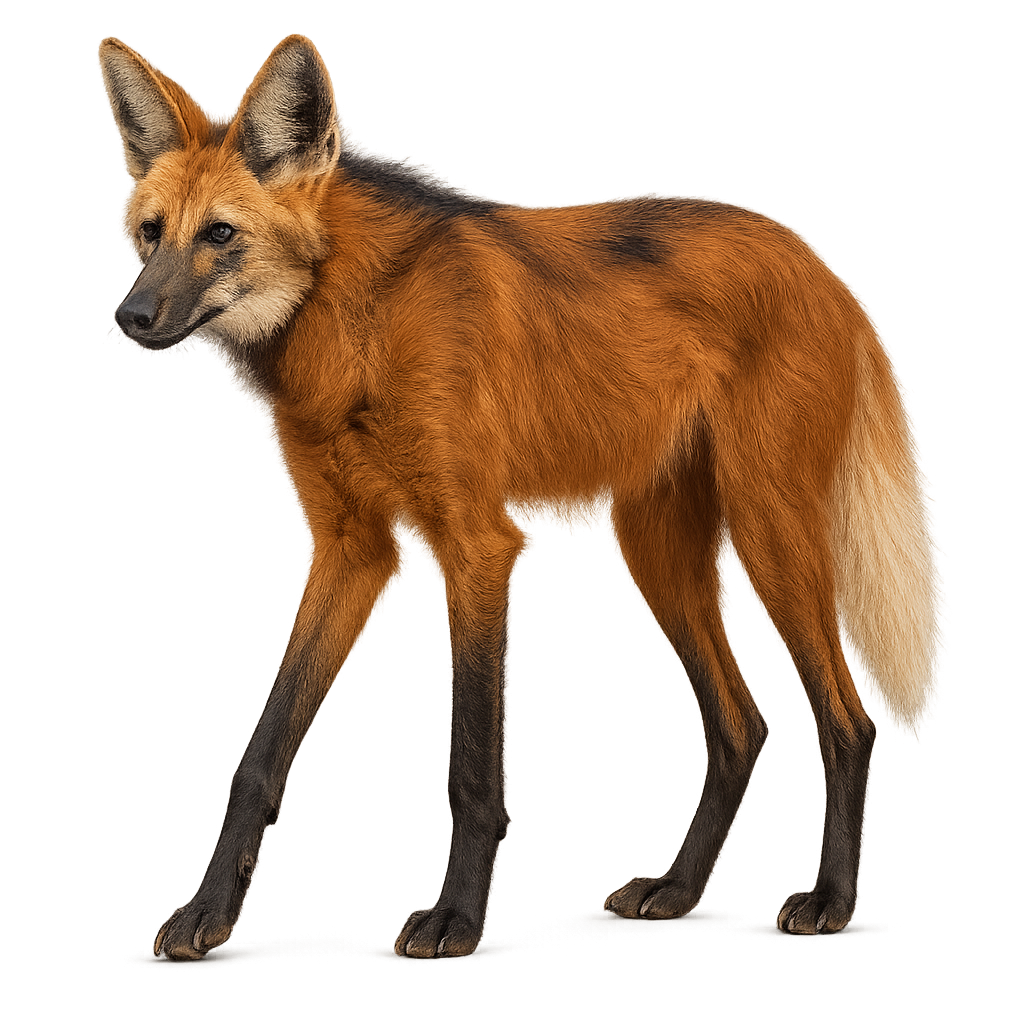Your wildlife photography guide.
Explore the maned wolf in detail, study its behavior, prepare your shots.
Where to observe and photograph the maned wolf in the wild
Learn where and when to spot the maned wolf in the wild, how to identify the species based on distinctive features, and what natural environments it inhabits. The WildlifePhotographer app offers tailored photography tips that reflect the maned wolf’s behavior, helping you capture better wildlife images. Explore the full species profile for key information including description, habitat, active periods, and approach techniques.
Maned Wolf
Scientific name: Chrysocyon brachyurus

IUCN Status: Vulnerable
Family: CANIDAE
Group: Mammals
Sensitivity to human approach: Very shy
Minimum approach distance: 40 m
Rut period: October to November
Gestation: 65 jours
Births: December to January
Habitat:
Tall savannas, fields, and dry forests
Activity period :
Active at dawn and dusk, ideal moments for observation.
Identification and description:
The Maned Wolf is a large carnivore native to South America, particularly known for its distinctive mane that surrounds its neck, giving the animal a majestic and unique appearance. It measures about 1 meter in body length, with a tail of about 30 to 40 cm, and weighs between 20 and 30 kg. Its coat is generally orange or golden in color, with darker shades on the head and legs, and a dark mane extending along its neck and throat. The Maned Wolf primarily inhabits the prairies and open savannas of Brazil, especially in the Pantanal region. It is an opportunistic predator, mainly feeding on small mammals, birds, and reptiles, but it can also consume fruits and plants. This wolf is an excellent runner and uses its speed to capture prey. Although the Maned Wolf is little known, it is an endangered species due to habitat loss, cattle trampling of land, and diseases. Conservation efforts are in place to protect this unique species.
Recommended lens:
400 mm – adjust based on distance, desired framing (portrait or habitat), and approach conditions.
Photography tips:
Approach slowly and discreetly, using a telephoto lens, as the maned wolf is a wary animal that can quickly move away if disturbed.
Photograph early in the morning or late in the afternoon, when the light is soft and the maned wolf is more active, often searching for food or patrolling its territory.
Capture moments of natural behavior: The maned wolf primarily hunts small mammals and insects, offering interesting opportunities for dynamic photos during its movements or hunts.
Be patient and respectful: The maned wolf is a social animal often found in groups. Wait for moments when it is more visible without disturbing its natural activities.
The maned wolf is a vulnerable species due to habitat loss and hunting. It is crucial to respect its natural environment and minimize disturbances. Follow local conservation rules to help preserve this rare and vulnerable species.
The WildlifePhotographer App is coming soon!
Be the first to explore the best nature spots, track rutting seasons, log your observations, and observe more wildlife.
Already 1 430 wildlife lovers subscribed worldwide

